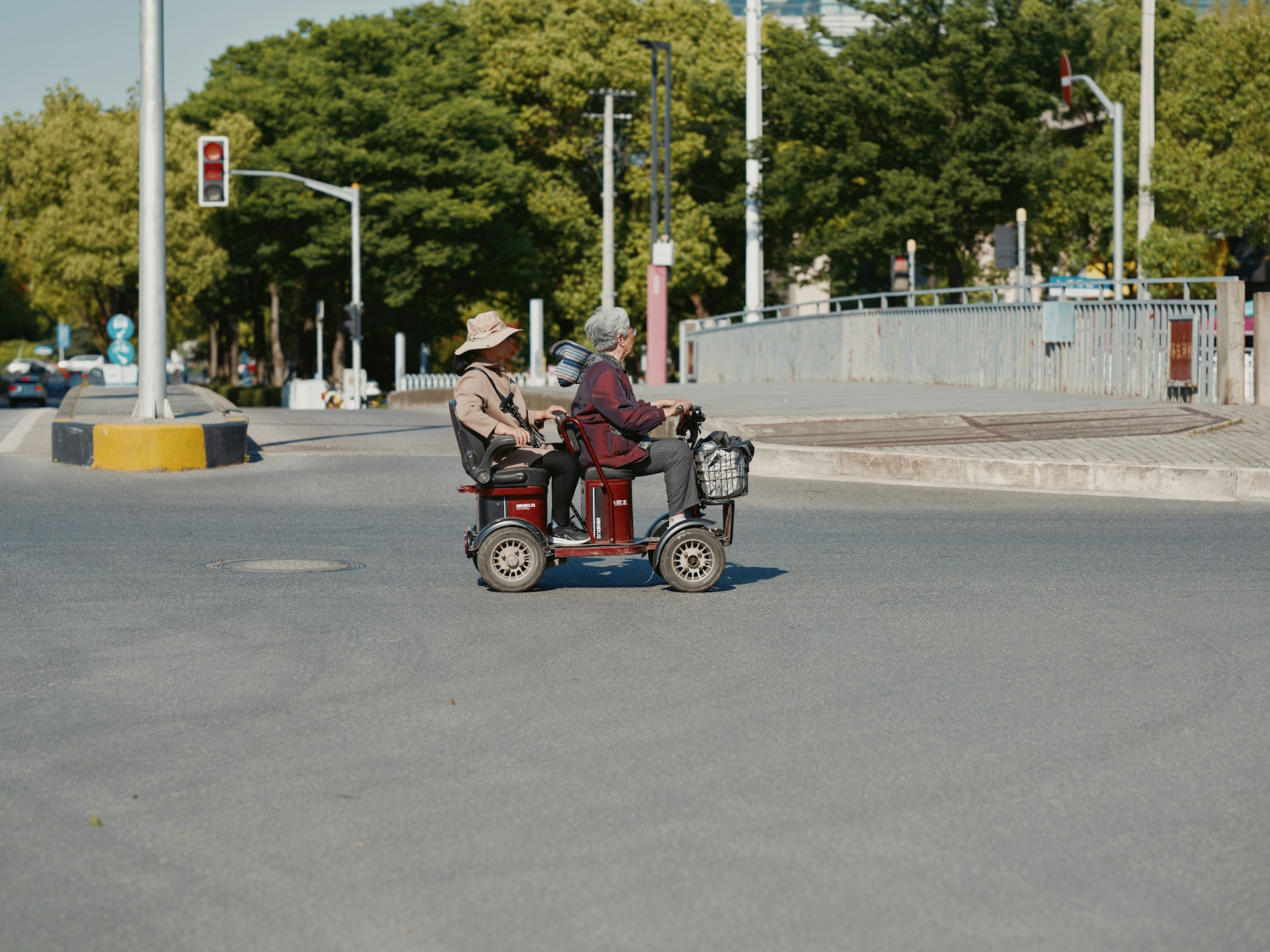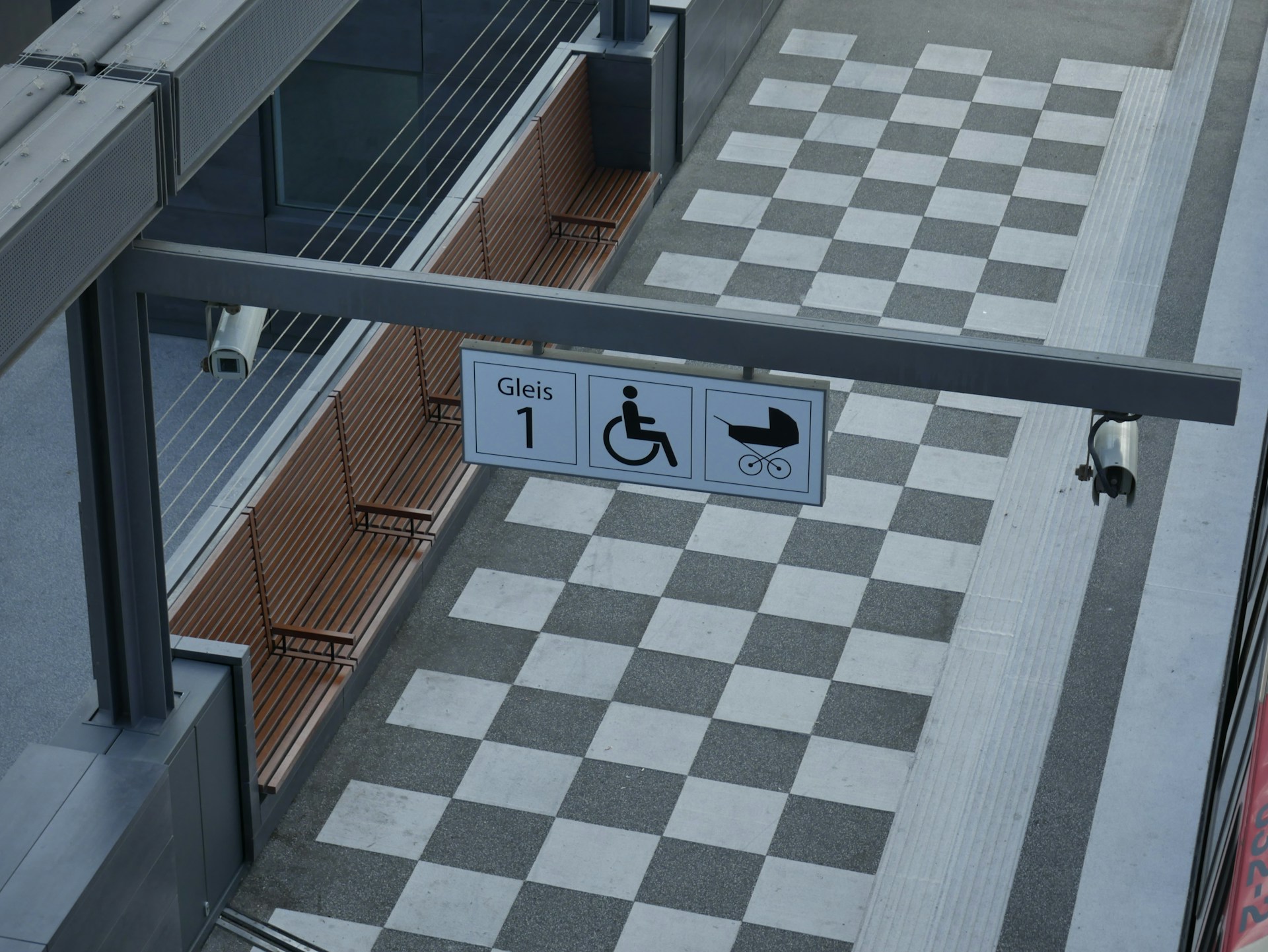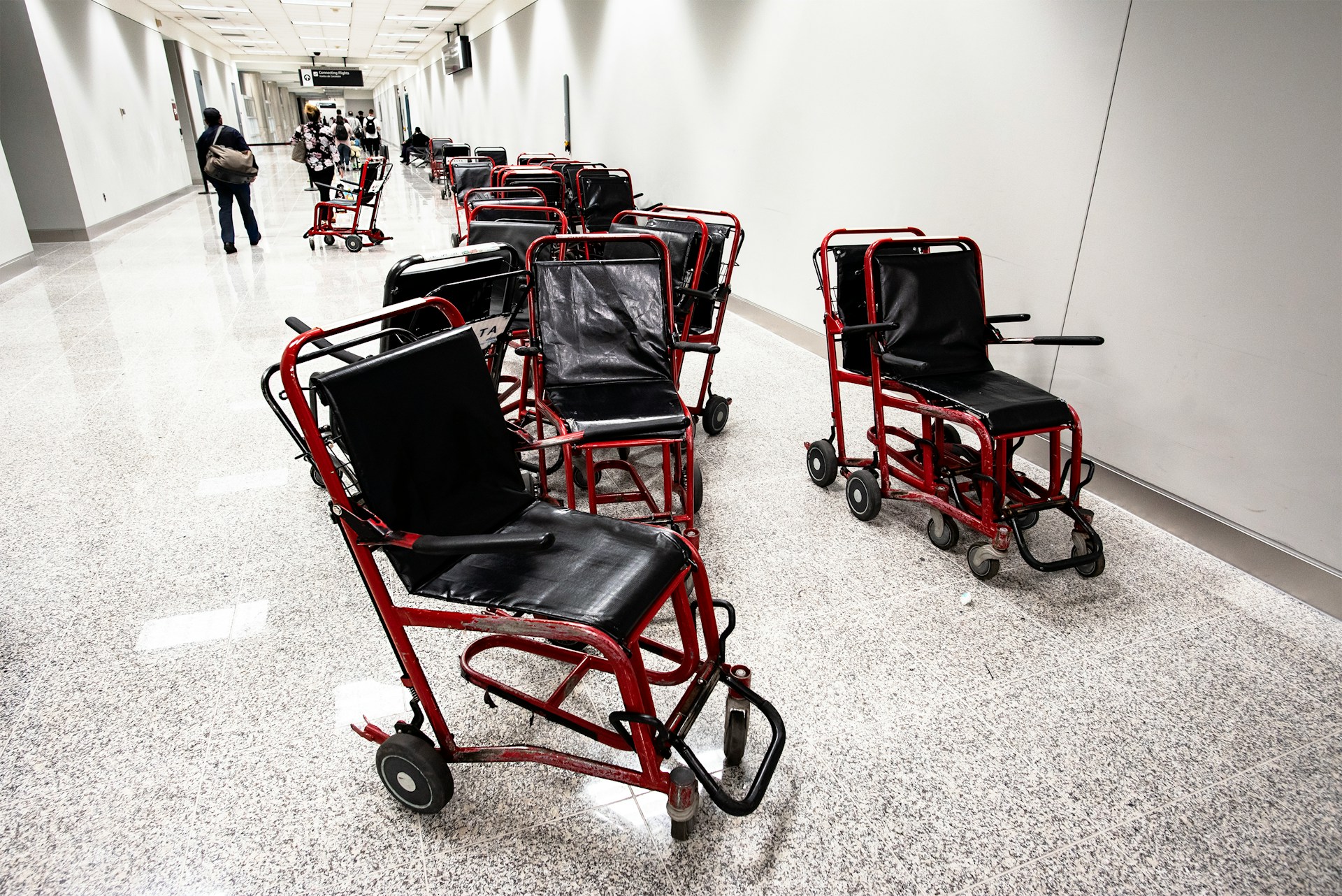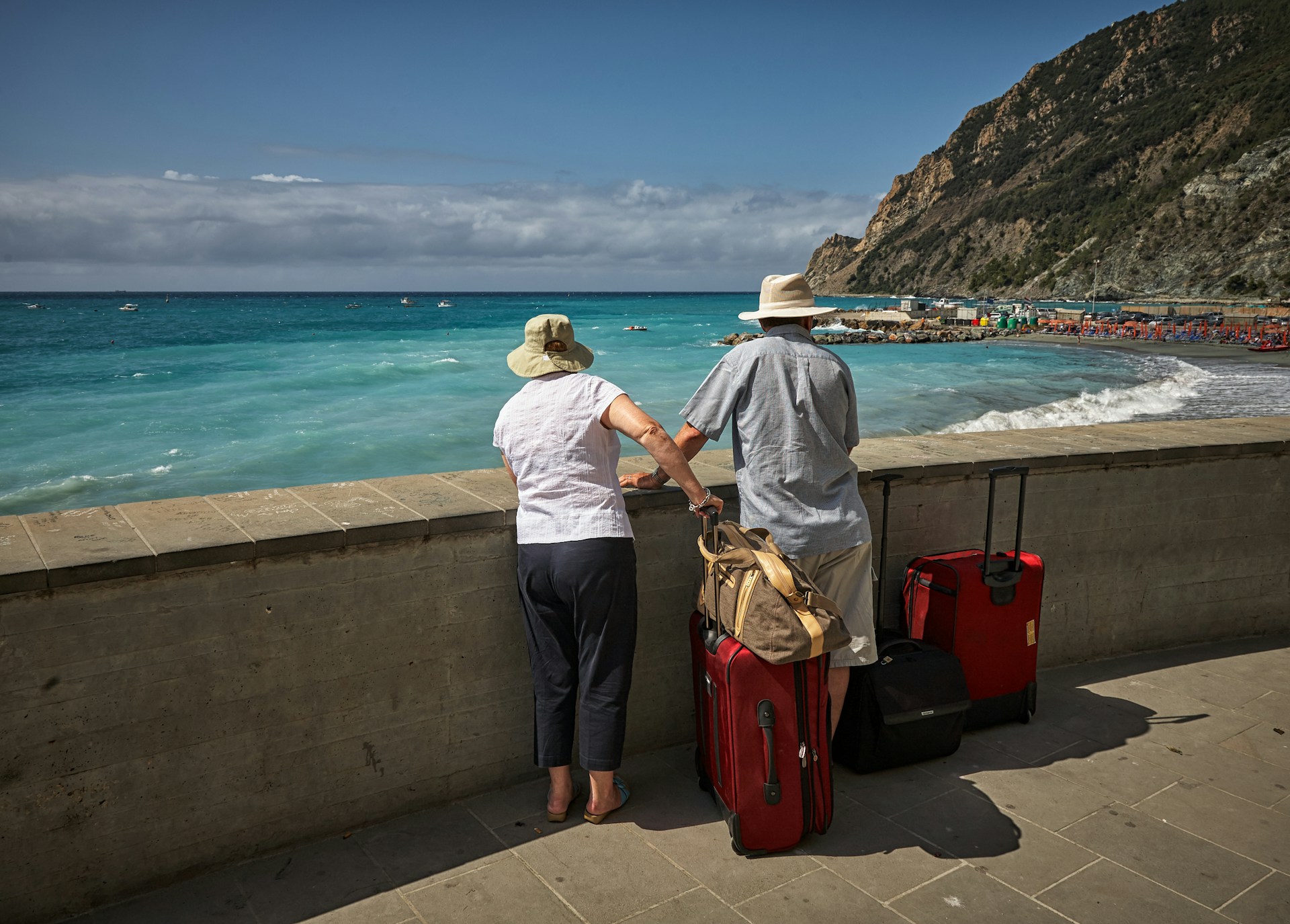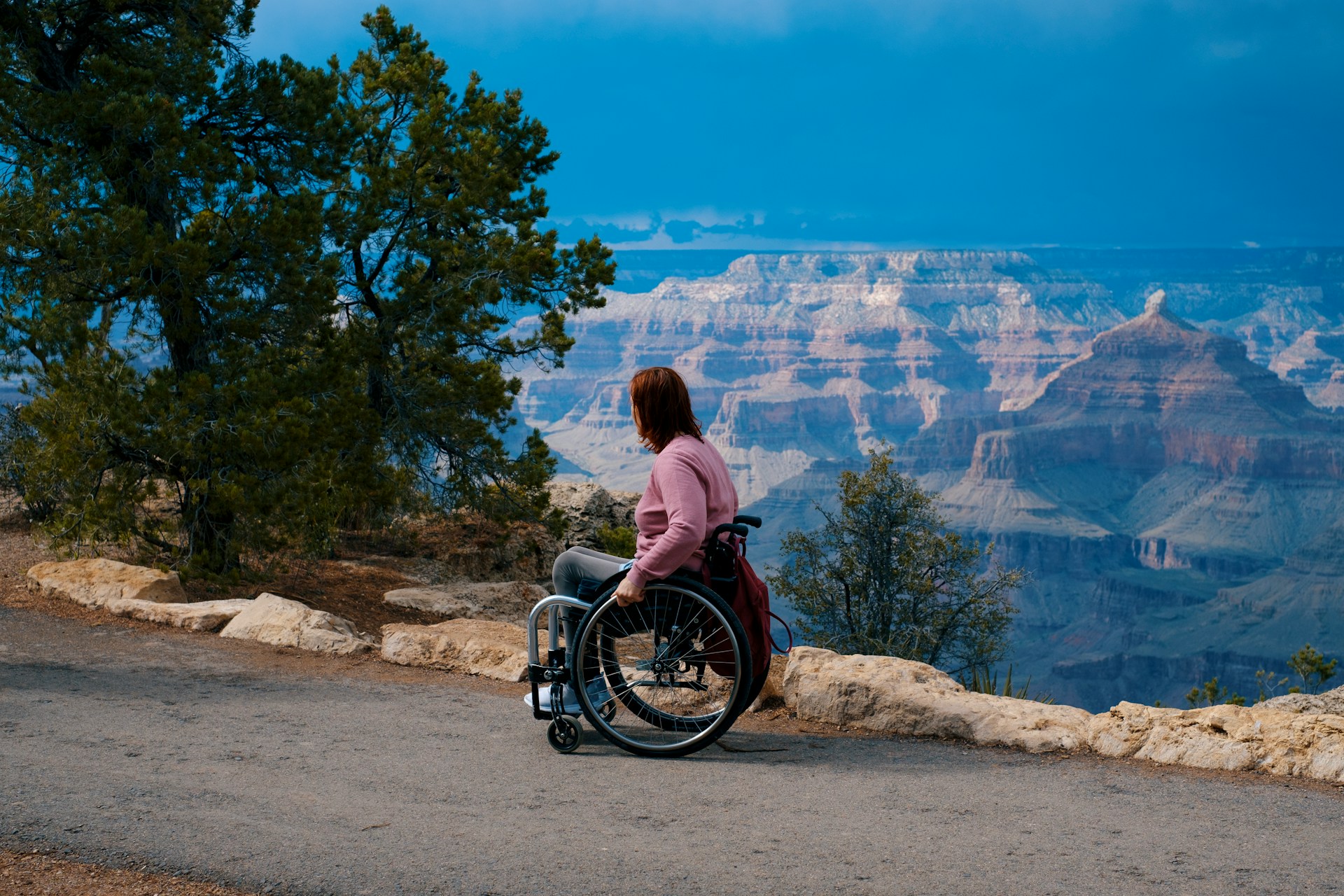
The joy of travel shouldn’t be limited by mobility challenges. Whether you’re planning a trip with a parent who uses a walker, a partner with a temporary injury, or you’re navigating the world with your own mobility impairment, thoughtful preparation can transform what might seem daunting into an enriching adventure, making traveling with mobility impairments the least of your worries!
This comprehensive guide covers everything from pre-trip planning to returning home, with practical advice for making travel not just possible, but enjoyable. Because everyone deserves to experience new horizons, regardless of how they move through the world.
Pre-Trip Planning: Setting Yourself Up for Success
Research Is Your Best Friend when Traveling with Mobility Impairments
The foundation of successful travel with mobility impairments is thorough research. Don’t just check if a hotel is “accessible” – dig deeper.
“Accessible” means dramatically different things depending on where you’re traveling. In Europe, it might mean there’s an elevator but still three steps at the entrance. In newer U.S. facilities, it typically indicates ADA compliance, but that’s still a minimum standard.
Call hotels directly and ask specific questions:
- Are there steps at the entrance?
- How wide are the doorways?
- Is there a roll-in shower or just grab bars around a tub?
- What’s the bed height?
- How much clear floor space exists for maneuvering?
For attractions, research accessibility beforehand through their websites or by calling. Many major attractions now offer virtual tours online, giving you a preview of potential obstacles.
Documentation and Medical Preparations
Gather and organize all necessary medical documentation:
- Doctor’s note explaining medical conditions and necessary accommodations
- Prescriptions (including generic names for international travel)
- Medical alert information
- Insurance cards and travel insurance policy information
For international travel, learn how to explain your mobility needs in the local language. Create a card with translated phrases explaining your requirements that you can show to taxi drivers, hotel staff, and others.
If you use specialized equipment, research repair options at your destination in case of damage. For power wheelchair users, check if your destination uses the same electrical voltage and plug configuration, or bring appropriate adapters.
Transportation Booking Strategies
When booking flights:
- Call the airline directly rather than booking online
- Request bulkhead seating for extra legroom (though note that armrests in these rows typically don’t raise)
- Specify exactly what assistance you’ll need
- If traveling with a wheelchair or scooter, know its dimensions and battery type
- Ask about the aircraft’s aisle chair availability and lavatory accessibility
For cruise travel, newer ships tend to be more accessible. Request specific cabin details and inquire about accessibility for shore excursions, as these vary widely.
For train travel, particularly in Europe or Asia, confirm platform accessibility and assistance protocols in advance.
Getting to the Airport: The Journey Before the Journey
Pre-Booking Mobility-Friendly Parking
One of the most overlooked aspects of travel planning is the journey to the airport itself. Standard airport parking can present significant challenges for travelers with mobility impairments – from distant spaces to shuttle buses not equipped with lifts.
Pre-booking parking through services like OneStopParking allows you to select facilities that specifically accommodate mobility needs. When booking, look for:
- Designated accessible parking spaces close to shuttle pickup
- Shuttle services with wheelchair lifts or ramps
- Assistance with luggage
- Covered pathways (particularly important in inclement weather)
Call the parking facility directly to confirm their specific accommodations and request any additional assistance you might need. Some premium services even offer valet options where staff will meet you directly at your vehicle and assist with the entire process.
Reserving in advance not only guarantees appropriate accommodations but typically saves 30-50% compared to standard airport parking rates – a welcome bonus when travel often includes other accessibility-related expenses. Mobility friendly parking is out there, and cheaper than you might think!
Airport Transfer Alternatives
If parking isn’t ideal for your situation, consider these alternatives:
- Accessible ride services (many ride-share apps now offer wheelchair accessible vehicle options)
- Airport shuttles from hotels (call to verify accessibility)
- Medical transportation services (some insurance plans cover these costs)
Arrival Timing
Add at least an extra hour to recommended airport arrival times. This allows for:
- Unpressured transfers from vehicle to terminal
- Extra time at check-in and security
- Buffer for unexpected accessibility challenges
- Comfortable boarding process (pre-boarding typically begins 45-60 minutes before departure)
Navigating Airports: From Curb to Gate
Airport Assistance Programs
Every U.S. airport offers disability assistance, but service levels and request procedures vary:
- Request assistance when booking your flight AND call the airline 48-72 hours before departure to confirm
- Specify exactly what help you need (wheelchair push service, electric cart, guidance only)
- For connecting flights, ensure assistance is arranged for each segment
When you arrive at the airport, immediately check in at the airline’s desk to confirm your assistance is arranged, even if you’ve checked in online.
Security Screening Know-How
TSA offers several programs to ease security screening:
- TSA PreCheck reduces the need to remove shoes, laptops, etc.
- TSA Cares provides specialized assistance (call 72 hours in advance: 855-787-2227)
- Notification Card (printable from the TSA website) discreetly informs officers of your needs
Know your rights regarding mobility equipment screening:
- You can request private screening
- You cannot be separated from mobility aids except during X-ray (if applicable)
- Manual pat-downs are available as alternatives to scanning equipment
Boarding Strategies
Pre-boarding is standard for passengers needing extra time, but strategies differ:
- Some people prefer boarding first for extra time to settle
- Others prefer boarding last to minimize time in aircraft seating
- If using an aisle chair for boarding, know that these transfers can be challenging and require clear communication with staff
The Flight Experience: Comfort and Dignity in the Air
In-Flight Mobility
Once seated, movement options become limited:
- Discuss with your doctor whether compression socks would benefit you
- For longer flights, request periodic assistance to stand (if possible) or change position
- If using the lavatory will be necessary, book an aisle seat as close as possible to facilities
Equipment Handling
Airline handling of mobility equipment deserves special attention:
- Attach clear handling instructions to wheelchairs or other mobility devices
- Remove and carry on any detachable parts (cushions, headrests, control units)
- Take photos of equipment before checking it to document pre-existing condition
- For powered devices, research battery handling requirements specific to your equipment and airline
International Considerations
Different countries have varying accessibility standards and cultural attitudes:
- Research accessibility laws at your destination
- Consider power adapter needs for medical or mobility equipment
- Learn basic phrases related to accessibility needs in the local language
At Your Destination: Maximizing Your Experience
Accommodation Realities
Beyond the basics of accessible rooms:
- Request rooms near elevators to minimize hallway navigation
- Check if the hotel has equipment like shower chairs available
- Consider portable adaptations like suction grab bars if traveling to less accessible destinations
- Third-party websites like Accomable (now part of Airbnb) and Accessible Travel Online offer verified accessible accommodations
Transportation Options
Local transportation accessibility varies dramatically:
- Many major cities have accessibility guides for public transportation
- Research accessible taxi services in advance
- Consider renting mobility equipment at your destination rather than transporting your own
- For drive destinations, numerous companies offer wheelchair accessible van rentals
Attraction Accessibility
Strategies for enjoying attractions:
- Contact attractions directly about specific accessibility accommodations
- Many museums and major sites offer specialized tours for visitors with mobility impairments
- Visit during off-peak hours when crowds are smaller and staff can provide more personalized attention
- Research accessible entrances, which are sometimes different from main entrances
Top US Airports with Outstanding Mobility Access
Based on comprehensive accessibility features, user reviews, and innovation in mobility accommodations, these airports stand out:
1. Phoenix Sky Harbor International Airport (PHX)
Phoenix Sky Harbor has invested heavily in accessibility through its comprehensive PHX Navigator Program, which provides specialized assistance for travelers with all types of mobility needs. The airport’s recent terminal modernization focused extensively on universal design principles, creating wide, unobstructed pathways throughout all terminals. Phoenix pioneered America’s first airport sensory room, demonstrating their commitment to accessibility beyond just physical mobility. The fully accessible inter-terminal transportation system ensures seamless connections between all areas of this sprawling airport complex. Perhaps most appreciated by travelers with mobility impairments are the exemplary accessible restroom facilities throughout all terminals, which exceed ADA requirements in both size and feature set.
2. Minneapolis-Saint Paul International Airport (MSP)
Minneapolis-Saint Paul International Airport has built its reputation as an accessibility leader by consistently going beyond compliance to create genuinely inclusive experiences. MSP was the innovator of airport service animal relief areas, now standard at most major airports. Their comprehensive accessibility training program for all customer-facing staff ensures consistent, dignified assistance throughout the airport experience. Particularly helpful for travelers with mobility impairments is their interactive accessibility map available on both their website and app, which details rest areas, accessible restrooms, and the shortest routes between gates. The fully accessible tram system between terminals eliminates connection concerns, while their automated screening lanes, specifically designed for travelers with disabilities, reduce security stress and wait times.
3. Detroit Metropolitan Wayne County Airport (DTW)
Detroit Metropolitan Wayne County Airport stands out for its ground-breaking accessible terminal design in the McNamara Terminal, which incorporates wide concourses, abundant natural light, and minimal level changes to enhance accessibility for all travelers. Their industry-leading wayfinding system with tactile pathways benefits those using mobility aids by providing clear, unambiguous directional guidance throughout the facility. Detroit has strategically placed rest zones specifically designed for travelers with mobility impairments throughout the terminals, offering comfortable seating and charging stations at regular intervals. Their comprehensive training program for all assistive service providers, developed with input from disability consultants, ensures consistent, respectful service. These initiatives have earned DTW multiple accessibility awards from disability advocacy organizations, recognizing their commitment to inclusive travel.
4. San Francisco International Airport (SFO)
San Francisco International Airport has established itself as the first airport to require accessibility standards exceeding ADA requirements in all new construction and renovations, creating one of the most physically accessible airports in the nation. SFO serves as an innovation hub for testing new accessibility technologies, including enhanced wayfinding systems and improved mobility assistance equipment. The airport features extensive quiet/rest areas throughout all terminals, providing crucial respite opportunities for travelers with mobility-related fatigue. Their comprehensive staff training program, developed in partnership with disability organizations, ensures all employees understand how to respectfully assist travelers with various needs. The fully accessible AirTrain system connecting all terminals eliminates transfer concerns, making connections significantly less stressful for travelers with mobility impairments.
5. Chicago O’Hare International Airport (ORD)
Despite its size and complexity, Chicago O’Hare International Airport has made remarkable strides in accessibility, most notably with the recently completed fully accessible Terminal 5 expansion. This renovation incorporates advanced universal design principles throughout. O’Hare provides detailed accessibility maps with rest area locations, helping travelers with mobility impairments plan their journey through this massive facility. Their specially trained assistance personnel receive ongoing education about respectful, effective support techniques. The advanced visual paging systems benefit those who cannot hear traditional announcements, while the accessible inter-terminal transportation system ensures all travelers can navigate between O’Hare’s distant terminals with equal ease, regardless of mobility challenges.
Returning Home: The Often Overlooked Final Leg
The return journey deserves the same careful planning as the outbound trip:
- Confirm return assistance with airlines 48 hours before departure
- Allow extra time for unexpected delays
- Schedule a rest day after returning before resuming regular activities
- Have a plan for equipment that may have been damaged during travel
Essential Resources and Tools
Technology That Helps
Several apps can transform the travel experience:
- AccessNow: Crowdsourced accessibility information worldwide
- Wheelmap: Maps showing wheelchair accessible places globally
- Brettapproved: Reviews of accessibility at hotels, restaurants, and attractions
- Google Maps now shows wheelchair accessible routes in many major cities
Organizations Providing Support
These organizations offer specialized travel resources:
- The Society for Accessible Travel and Hospitality (SATH)
- Mobility International USA
- AbleThrive
- The American Automobile Association (AAA) provides accessibility information for drivers
—
While traveling with mobility impairments presents challenges, the landscape is steadily improving. More destinations, transportation providers, and accommodations are recognizing the importance of inclusive design and service.
With thorough planning, appropriate accommodations, and a flexible attitude, mobility challenges need not prevent you from experiencing the joy and enrichment of travel. The world has much to offer, and you deserve to experience it.
Whether you’re organizing travel for a loved one with mobility impairments or planning your own adventure, remember that each successful trip creates a foundation of confidence and knowledge for future journeys. The first trip may be the hardest, but it opens doors to a world of possibilities.
Start with smaller journeys to build confidence, be thorough in your planning, and maintain a spirit of adventure. After all, the essence of travel isn’t about how you get there—it’s about the experiences you have and the memories you create along the way.
